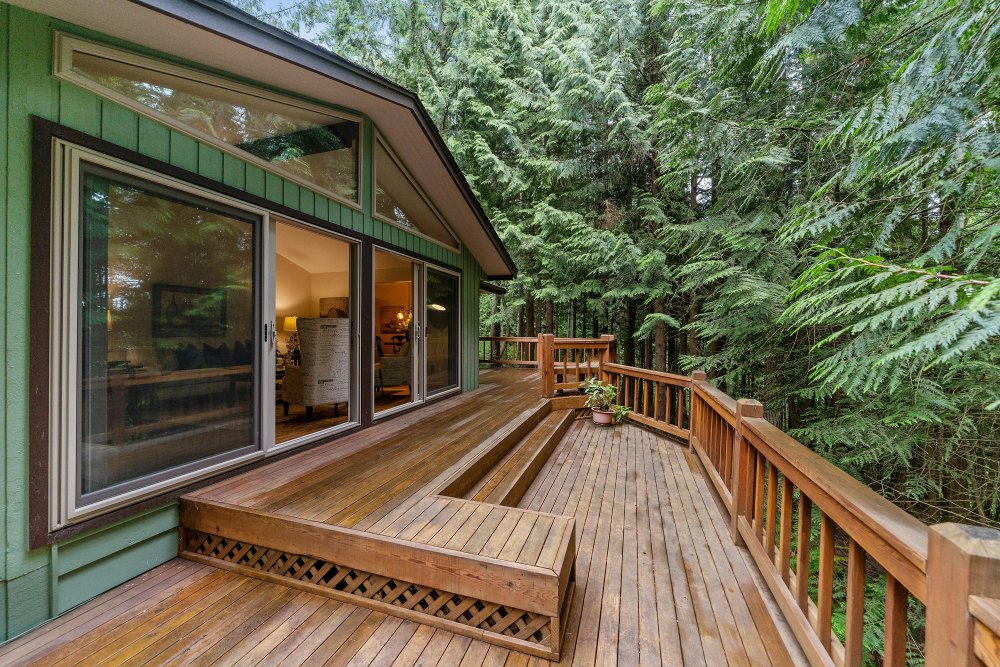A deck is more than just an outdoor platform. It’s an extension of your living space and, when designed thoughtfully, it blends seamlessly with the character of your home. One of the most common mistakes homeowners make is choosing a deck design that feels “tacked on” instead of intentionally integrated. That’s why understanding how to match a custom deck with your home’s architecture is so important.
From selecting the right materials to harmonizing with your home’s lines and colors, the choices you make during the planning stage will determine whether your deck looks like a natural part of your property—or an afterthought.
Look at Your Home’s Style First
Every home has a unique architectural identity. Is yours a modern minimalist build with clean lines? Or perhaps a Craftsman-style home with detailed woodwork? Maybe it’s a colonial house with symmetry and tradition at its core.
Your deck should complement these details rather than compete with them. For example:
-
- Modern Homes: Modern Homes: Opt for sleek decking materials such as composite boards in muted tones, similar to what you’d find in high-quality decking Sydney projects. Cable railings or glass panels often enhance the open, minimalist feel.
- Craftsman Homes: Stick with natural woods, earthy stains, and details like pergolas or built-in planters. These touches echo the home’s handmade craftsmanship.
- Colonial Homes: A simple rectangular deck with white or dark-stained railings matches the symmetry of colonial architecture.
The more you mirror your home’s style, the more cohesive the finished look will be.
Coordinate Materials and Colors
One of the best ways to make your deck feel like part of the home is through color and material choices. If your home has warm brick siding, a rich redwood or cedar deck might tie the look together. On the other hand, if you have gray stone or neutral siding, you might want to choose a gray composite or natural wood with a cooler stain.
This doesn’t mean your deck has to match your siding exactly—but it should complement it. The right stain, railing color, or decking material can either subtly contrast or completely blend with your home’s palette.
For homeowners planning major outdoor improvements, investing in a custom deck design that complements your home’s look ensures better long-term appeal and even boosts resale value.
Balance Size and Proportion
Another factor often overlooked is proportion. A deck that’s too large can overwhelm a small house, while one that’s too small can look out of place on a large property.
As a general rule, the deck should not exceed the scale of the home. A raised deck might work beautifully for multi-story houses, while a ground-level design fits best with ranch-style homes. Proportion helps maintain architectural harmony and ensures your deck feels like a natural extension rather than a mismatch.
Consider Roofing and Structures
Adding structures such as pergolas, covered sections, or screened enclosures is an excellent way to tie your deck into your home’s architecture.
-
- If your house has a pitched roof, you can extend that style over a covered section of the deck.
- If you have strong vertical lines in your home design, consider railings or pergola beams that mimic those shapes.
A well-planned custom deck installation can echo your home’s existing roofline or shapes, making it feel connected rather than detached.
Don’t Forget the Details
Sometimes the smallest details make the biggest difference. Consider these finishing touches:
-
- Railing style: Match the railings to your home’s window trims, porch columns, or fencing.
- Lighting: Subtle, built-in deck lighting can mirror the style of your exterior light fixtures.
- Furniture and décor: Outdoor furniture choices can also reflect your home’s personality—rustic, modern, or classic.
Even these subtle touches help create continuity and cohesion.
Work With the Landscape
Your home’s architecture doesn’t exist in isolation—it interacts with the surrounding landscape. When planning your custom deck, think about how it flows with your yard, garden, or outdoor features.
-
- A modern home with minimal landscaping might look best with a clean, angular deck.
- A home with lush gardens may benefit from a curved or tiered deck that gently blends into the greenery.
By connecting both the architecture of your home and the natural surroundings, your deck becomes a balanced part of the overall picture.
Final Thoughts
A custom deck has the power to transform your outdoor living space, but only if it feels like an extension of your home’s character. By paying attention to architectural style, color coordination, proportion, and even small details, you can ensure your deck enhances your home rather than distracts from it.
Matching your deck to your home’s architecture not only increases daily enjoyment but also adds lasting value to your property. With thoughtful planning, your outdoor space can look and feel like it was always meant to be there.
Want to know more ways to manage your home?
Snag a free workbook and get inspiration on all the ways to love your life even more.
>>Click Here to Discover Additional Strategies for Managing Stress, Anxiety, and Burnout <<









